編輯:Android編程入門
本文演示用Android Studio寫一個最簡單的輸入法。界面和交互都很簡陋,只為剔肉留骨,彰顯寫一個Android輸入法的要點。
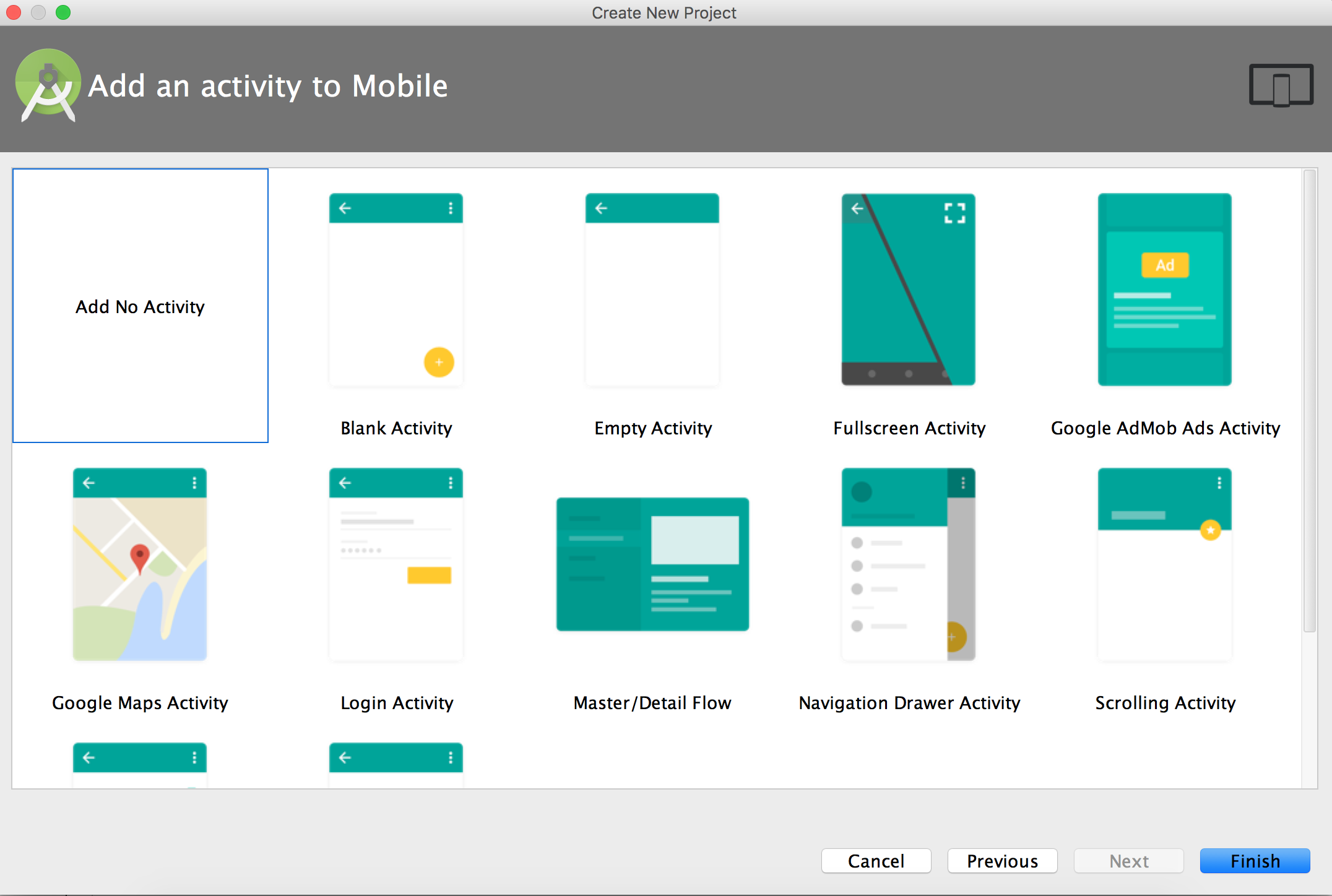
我給該輸入法命名為AndroidXXIME。
如前文《Android下創建一個輸入法》中所說:輸入法是一個包含IME service的安卓應用程序,首先應該在程序的manifest中聲明service。我的manifest.xml文件如下:
<manifest xmlns:android="http://schemas.android.com/apk/res/android"
package="com.binglen.androidxxime">
<application
android:allowBackup="true"
android:icon="@mipmap/ic_launcher"
android:label="@string/app_name"
android:supportsRtl="true"
android:theme="@style/AppTheme">
<service android:name=".AndroidXXIME"
android:label="@string/xxime"
android:permission="android.permission.BIND_INPUT_METHOD"
>
<intent-filter>
<action android:name="android.view.InputMethod" />
</intent-filter>
<meta-data android:name="android.view.im" android:resource="@xml/method"/>
</service>
</application>
</manifest>
在Android Studio生成application塊的尾部添加IME service的聲明。第一行粗體字聲明需要BIND_INPUT_METHOD權限,第二行粗體字創建了一個能夠匹配android.view.InputMethod的intent filter,第三行粗體字定義了輸入法的metadata。
需要注意:service android:name必須與後面java文件中的類名保持一致。
接下來創建該service中聲明的資源。
meta-data裡用到了資源xml/method文件,該文件中包含了輸入法的subtype屬性,輸入法通過該屬性定義它所支持的輸入模式和語言,一個輸入法可以包含多個subtype屬性。在工程中res下創建xml文件夾,把method.xml添加到該文件夾下。method.xml內容如下:
<?xml version="1.0" encoding="utf-8"?>
<input-method xmlns:android="http://schemas.android.com/apk/res/android">
<subtype
android:label="@string/subtype_en_US"
android:imeSubtypeLocale="en_US"
android:imeSubtypeMode="keyboard" />
</input-method>
關於subtype的屬性,可以參見InputMethodSubtype:
label是該subtype的名字
imeSubtypeLocale是該subtype支持的語言類型
imeSubtypeMode是它所支持的模式,可以是keyboard或者voice,當輸入法被調起是,系統會把用戶選擇的mode值傳給輸入法。
在這裡補上前文引用到的字符串定義:
<string name="xxime">XXIME</string> <string name="subtype_en_US">English (US)</string>
xxime在manifest中定義service的android:label時被引用到,該字串用來顯示系統“語言和輸入法”中本輸入法的名字:
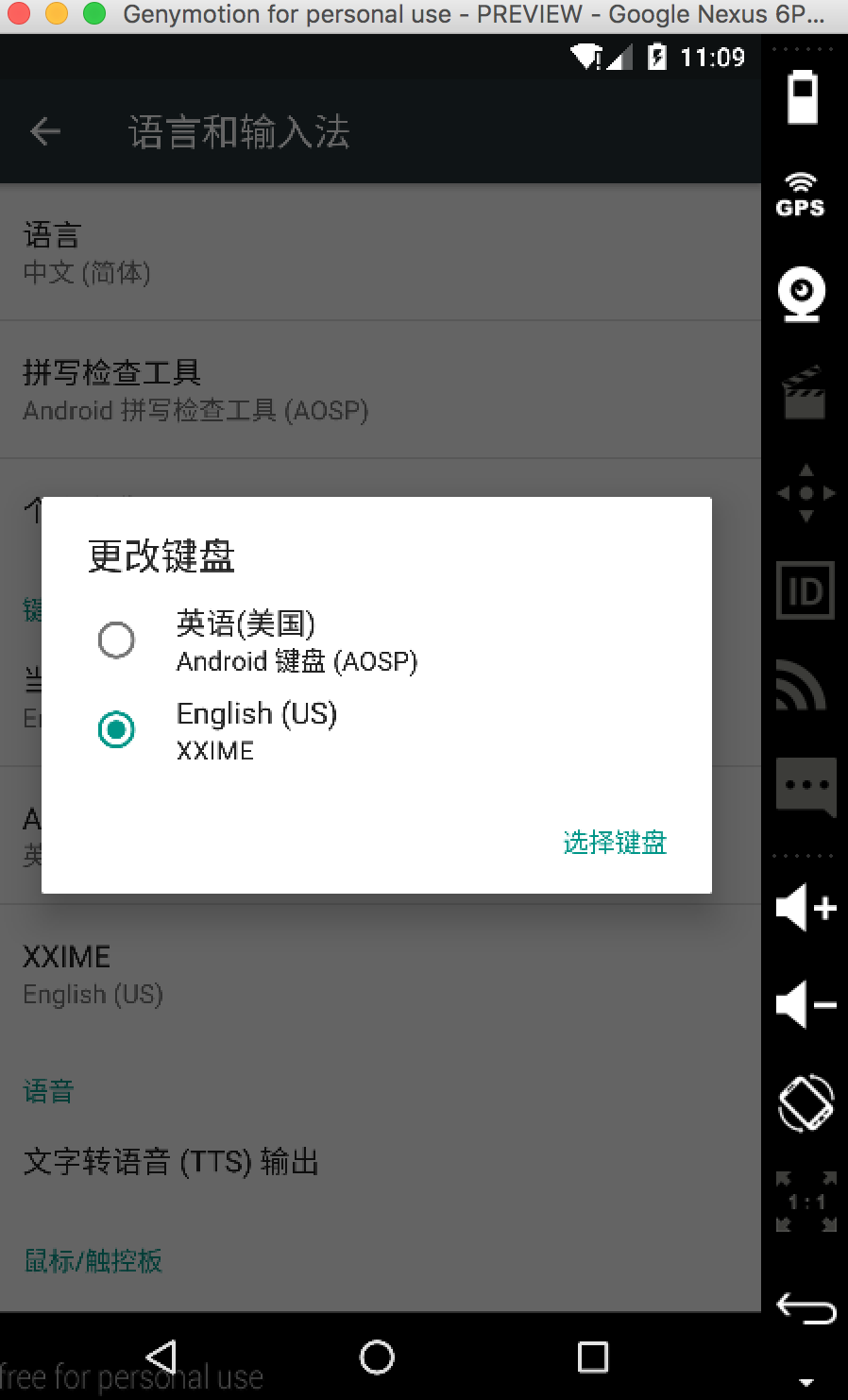
在res/layout/中添加文件keyboard.xml,定義鍵盤布局,內容如下:
<?xml version="1.0" encoding="UTF-8"?>
<android.inputmethodservice.KeyboardView
xmlns:android="http://schemas.android.com/apk/res/android"
android:id="@+id/keyboard"
android:layout_width="match_parent"
android:layout_height="wrap_content"
android:layout_alignParentBottom="true"
android:keyPreviewLayout ="@layout/preview"
/>
點擊android.inputmethodservice.KeyboardView查看關於它的XML屬性,其中keyPreviewLayout表示鍵盤被按下時的布局資源。在res/layout中添加preview.xml如下:
<?xml version="1.0" encoding="utf-8"?>
<TextView xmlns:android="http://schemas.android.com/apk/res/android"
android:layout_width="match_parent"
android:layout_height="match_parent"
android:gravity="center"
android:background="#ffff00"
android:text
android:textSize="30sp"
>
</TextView>
裡面僅有一個TextView。
前面資源引用的源頭都來自manifest文件,卻不見哪裡引用keyboard.xml。答案在後面,AndroidXXIME.java文件中onCreateInputView()函數中創建鍵盤視圖和鍵盤布局時會用到,包括下面的qwerty.xml。
按鍵信息定義在Keyboard中,其格式形式如下:
<Keyboard
android:keyWidth="%10p"
android:keyHeight="50px"
android:horizontalGap="2px"
android:verticalGap="2px" >
<Row android:keyWidth="32px" >
<Key android:keyLabel="A" />
...
</Row>
...
</Keyboard>
這是一個嵌套結構,其下包含了Row表示一行,內部又包含Key表示一個按鍵,每個按鍵有兩個必填屬性:
· keyLabel:按鍵上顯示的文字
· codes:該按鍵代表的Unicode碼
我們的按鍵信息文件在res/xml/qwerty.xml中,定義如下:
<Keyboard xmlns:android="http://schemas.android.com/apk/res/android"
android:keyWidth="10%p"
android:horizontalGap="0px"
android:verticalGap="0px"
android:keyHeight="60dp"
>
<Row>
<Key android:codes="113" android:keyLabel="q" android:keyEdgeFlags="left"/>
<Key android:codes="119" android:keyLabel="w"/>
<Key android:codes="101" android:keyLabel="e"/>
<Key android:codes="114" android:keyLabel="r"/>
<Key android:codes="116" android:keyLabel="t"/>
<Key android:codes="121" android:keyLabel="y"/>
<Key android:codes="117" android:keyLabel="u"/>
<Key android:codes="105" android:keyLabel="i"/>
<Key android:codes="111" android:keyLabel="o"/>
<Key android:codes="112" android:keyLabel="p" android:keyEdgeFlags="right"/>
</Row>
<Row android:layout_centerHorizontal="true">
<Key android:codes="97" android:keyLabel="a" android:horizontalGap="5%p" android:keyEdgeFlags="left"/>
<Key android:codes="115" android:keyLabel="s"/>
<Key android:codes="100" android:keyLabel="d"/>
<Key android:codes="102" android:keyLabel="f"/>
<Key android:codes="103" android:keyLabel="g"/>
<Key android:codes="104" android:keyLabel="h"/>
<Key android:codes="106" android:keyLabel="j"/>
<Key android:codes="107" android:keyLabel="k"/>
<Key android:codes="108" android:keyLabel="l" android:keyEdgeFlags="right"/>
</Row>
<Row>
<Key android:codes="39" android:keyLabel="'" android:keyEdgeFlags="left"/>
<Key android:codes="122" android:keyLabel="z"/>
<Key android:codes="120" android:keyLabel="x"/>
<Key android:codes="99" android:keyLabel="c"/>
<Key android:codes="118" android:keyLabel="v"/>
<Key android:codes="98" android:keyLabel="b"/>
<Key android:codes="110" android:keyLabel="n"/>
<Key android:codes="109" android:keyLabel="m"/>
<Key android:codes="44" android:keyLabel=","/>
<Key android:codes="46" android:keyLabel="." android:keyEdgeFlags="right"/>
</Row>
<Row android:rowEdgeFlags="bottom">
<Key android:codes="63" android:keyLabel="\?" android:keyWidth="10%p" android:keyEdgeFlags="left"/>
<Key android:codes="47" android:keyLabel="/" android:keyWidth="10%p" />
<Key android:codes="32" android:keyLabel=" " android:keyWidth="40%p" android:isRepeatable="true"/>
<Key android:codes="-5" android:keyLabel="DEL" android:keyWidth="20%p" android:isRepeatable="true"/>
<Key android:codes="-4" android:keyLabel="DONE" android:keyWidth="20%p" android:keyEdgeFlags="right"/>
</Row>
</Keyboard>
其中有一些負值是定義在Keyboard類中的常量。
在字母a鍵的定義中有:android:horizontalGap="5%p",官方文檔解釋android:horizontalGap用來定義按鍵之間的間距,其實是與上一個按鍵之間的距離,如果是左邊打頭的的按鍵,則是與左邊緣之間的距離。%p表示在父組件中的尺寸占比。
接下來就需要為輸入法創建service和listener了。可以在一個類裡完成這兩個角色,AndroidXXIME類擴展了InputMethodService,並實現了KeyboardView.OnKeyboardActionListener接口。該類的定義如下:
public class AndroidXXIME extends InputMethodService
implements KeyboardView.OnKeyboardActionListener {
private KeyboardView keyboardView; // 對應keyboard.xml中定義的KeyboardView
private Keyboard keyboard; // 對應qwerty.xml中定義的Keyboard
@Override
public void onPress(int primaryCode) {
}
@Override
public void onRelease(int primaryCode) {
}
@Override
public void onText(CharSequence text) {
}
@Override
public void swipeDown() {
}
@Override
public void swipeLeft() {
}
@Override
public void swipeRight() {
}
@Override
public void swipeUp() {
}
@Override
public View onCreateInputView() {
// keyboard被創建後,將調用onCreateInputView函數
keyboardView = (KeyboardView)getLayoutInflater().inflate(R.layout.keyboard, null); // 此處使用了keyboard.xml
keyboard = new Keyboard(this, R.xml.qwerty); // 此處使用了qwerty.xml
keyboardView.setKeyboard(keyboard);
keyboardView.setOnKeyboardActionListener(this);
return keyboardView;
}
private void playClick(int keyCode){
// 點擊按鍵時播放聲音,在onKey函數中被調用
AudioManager am = (AudioManager)getSystemService(AUDIO_SERVICE);
switch(keyCode){
case 32:
am.playSoundEffect(AudioManager.FX_KEYPRESS_SPACEBAR);
break;
case Keyboard.KEYCODE_DONE:
case 10:
am.playSoundEffect(AudioManager.FX_KEYPRESS_RETURN);
break;
case Keyboard.KEYCODE_DELETE:
am.playSoundEffect(AudioManager.FX_KEYPRESS_DELETE);
break;
default: am.playSoundEffect(AudioManager.FX_KEYPRESS_STANDARD);
}
}
@Override
public void onKey(int primaryCode, int[] keyCodes) {
InputConnection ic = getCurrentInputConnection();
playClick(primaryCode);
switch(primaryCode){
case Keyboard.KEYCODE_DELETE :
ic.deleteSurroundingText(1, 0);
break;
case Keyboard.KEYCODE_DONE:
ic.sendKeyEvent(new KeyEvent(KeyEvent.ACTION_DOWN, KeyEvent.KEYCODE_ENTER));
break;
default:
char code = (char)primaryCode;
ic.commitText(String.valueOf(code), 1);
}
}
}
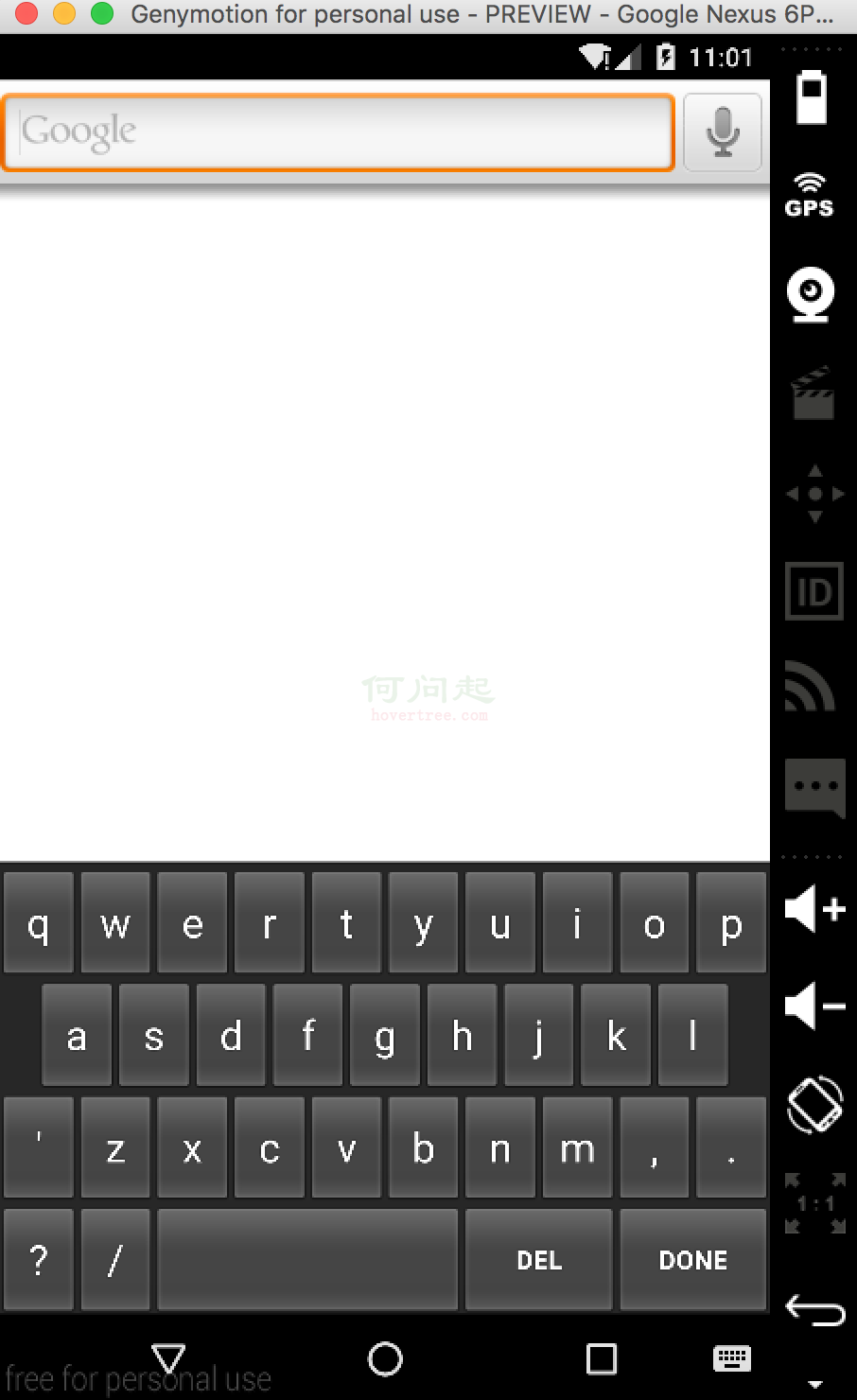
該例程代碼可參見https://github.com/palanceli/AndroidXXIME/tree/v1
 Android 橫豎屏+碎片的應用
Android 橫豎屏+碎片的應用
最終效果展示: 項目介紹:通過碎片的方式顯示標題列表和內容,其中也牽涉到橫豎屏的知識 項目代碼下載:http://files.cnblogs.com/
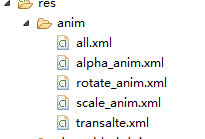 補間動畫TweenAnimation
補間動畫TweenAnimation
animation_translate = AnimationUtils.loadAnimation(MainActivity.this, R.anim.transalt
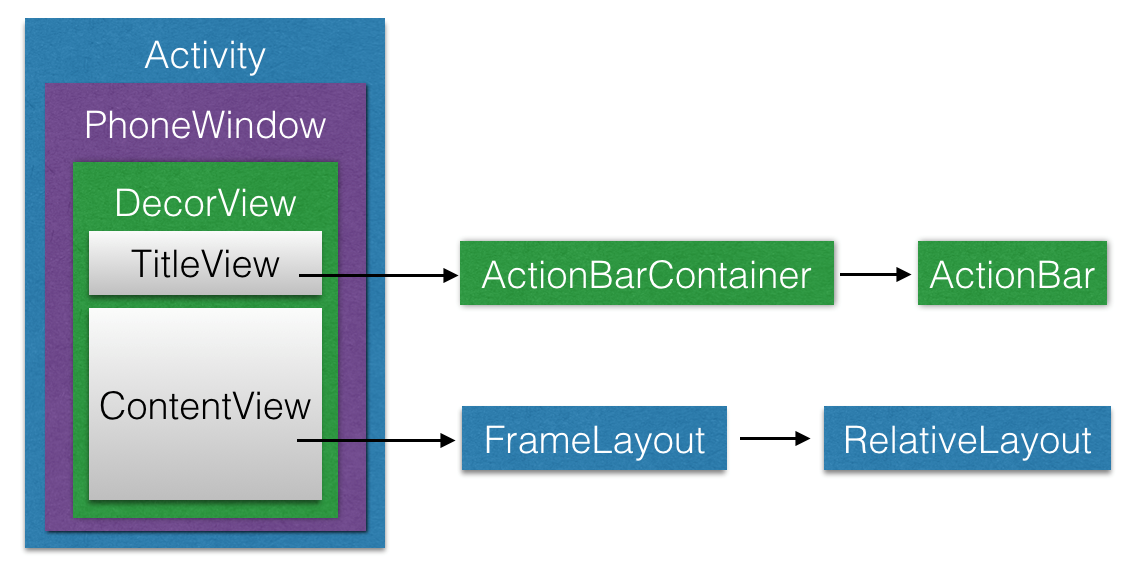 深入了解View的繪制流程
深入了解View的繪制流程
1. ViewRoot ViewRoot是連接WindowManager與DecorView的紐帶,View的整個繪制流程的三大步(
 Android設置虛線、圓角、漸變
Android設置虛線、圓角、漸變
有圖又真相,先上圖再說。點擊效果: 設置虛線: [html] view plain copy &